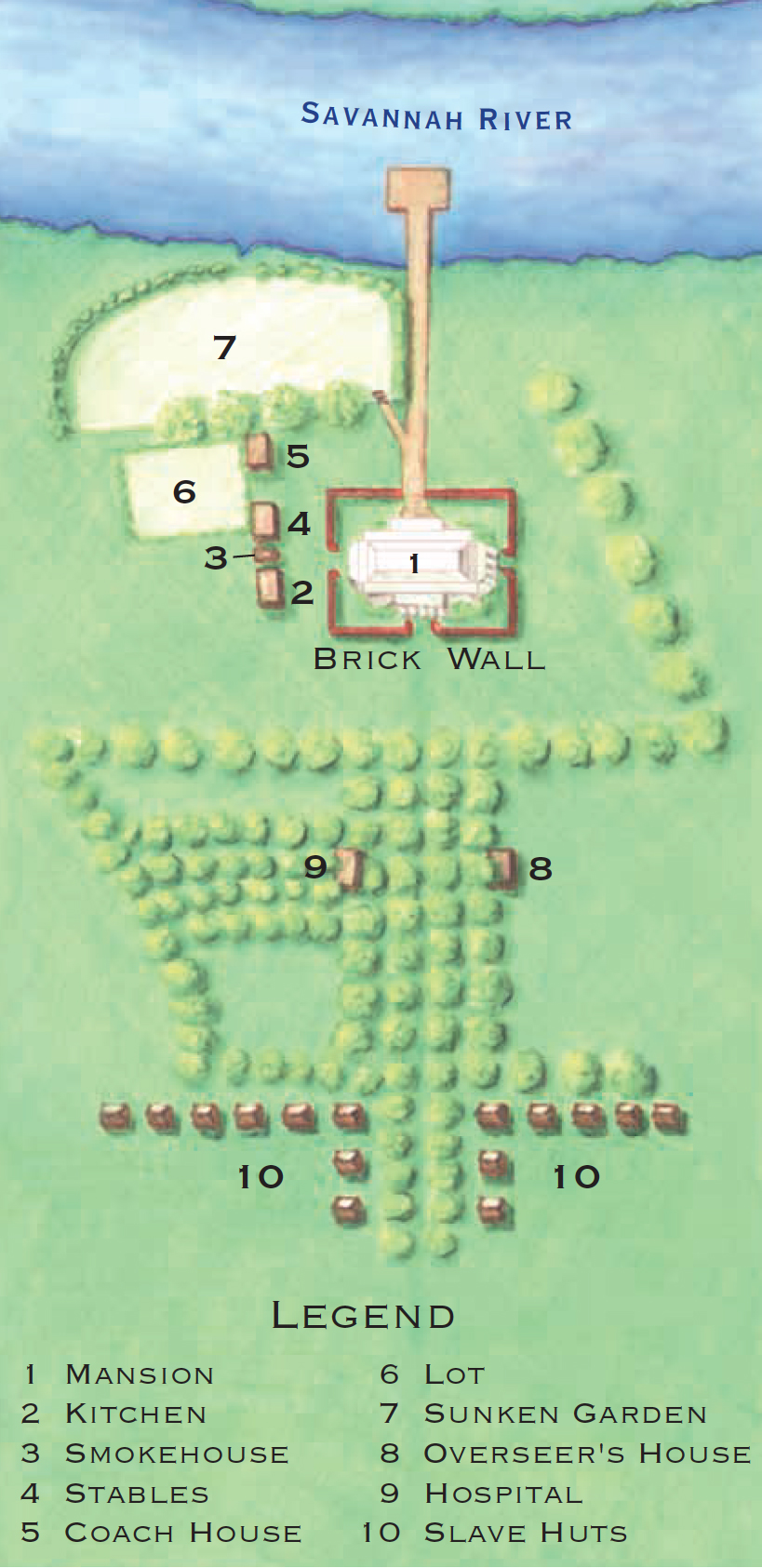
FIGURE 13.2 A Southern Plantation
Slavery determined how masters laid out their plantations, where they situated their “big houses” and slave quarters, and what kinds of buildings they constructed. This model of the Hermitage, the mansion built in 1830 for Henry McAlpin, a Georgia rice planter, shows the overseer’s house poised in a grove of oak trees halfway between the owner’s mansion and the slave huts. The placement of the mansion at the end of an extended road leading up from the river underscored McAlpin’s affluence and authority. Adapted from Back of the Big House: The Architecture of Plantation Slavery by John Michael Vlach. Copyright © 1993 by the University of North Carolina Press. Reprinted with permission of the University of North Carolina Press. Original illustration property of the Historic American Buildings Survey, a division of the National Park Service.